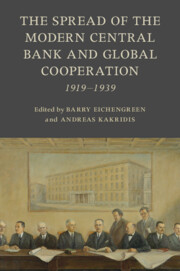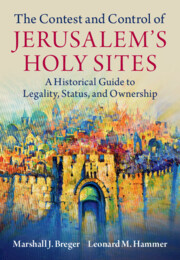147 results
1 - How and When Did the Customary Prohibition of the Use of Force Emerge?
- from Part I - Treaty versus Custom
-
- Book:
- Prohibited Force
- Published online:
- 23 February 2024
- Print publication:
- 29 February 2024, pp 17-29
-
- Chapter
-
- You have access
- Open access
- HTML
- Export citation
4 - History
-
- Book:
- The Contemporary International Committee of the Red Cross
- Published online:
- 01 February 2024
- Print publication:
- 01 February 2024, pp 65-87
-
- Chapter
- Export citation
11 - Keynes and International Trade Politics after the First World War
-
-
- Book:
- Keynes's <i>Economic Consequences of the Peace</i> after 100 Years
- Published online:
- 14 December 2023
- Print publication:
- 25 January 2024, pp 280-299
-
- Chapter
- Export citation
4 - The Gender of Identity Documents
-
- Book:
- Selling French Sex
- Published online:
- 04 January 2024
- Print publication:
- 25 January 2024, pp 122-156
-
- Chapter
- Export citation
1 - Lessons of Keynes’s Economic Consequences in a Turbulent Century
-
-
- Book:
- Keynes's <i>Economic Consequences of the Peace</i> after 100 Years
- Published online:
- 14 December 2023
- Print publication:
- 25 January 2024, pp 1-56
-
- Chapter
- Export citation
1 - The French Paradigm
-
- Book:
- Selling French Sex
- Published online:
- 04 January 2024
- Print publication:
- 25 January 2024, pp 20-44
-
- Chapter
- Export citation
2 - Desiring Undesirable Women
-
- Book:
- Selling French Sex
- Published online:
- 04 January 2024
- Print publication:
- 25 January 2024, pp 45-85
-
- Chapter
- Export citation
Introduction
-
- Book:
- Selling French Sex
- Published online:
- 04 January 2024
- Print publication:
- 25 January 2024, pp 1-19
-
- Chapter
- Export citation
3 - From the Regulation of War to the Prohibition on the Use of Force
- from Part I - Development of the Contemporary jus ad bellum in International Law
-
- Book:
- The Use of Force and the International Legal System
- Published online:
- 07 December 2023
- Print publication:
- 21 December 2023, pp 29-54
-
- Chapter
- Export citation
1 - Interwar Central Banks
- from Part I - General
-
-
- Book:
- The Spread of the Modern Central Bank and Global Cooperation
- Published online:
- 02 November 2023
- Print publication:
- 16 November 2023, pp 3-39
-
- Chapter
- Export citation
10 - The Bulgarian National Bank, 1926–1935
- from Part II - Specific
-
-
- Book:
- The Spread of the Modern Central Bank and Global Cooperation
- Published online:
- 02 November 2023
- Print publication:
- 16 November 2023, pp 268-300
-
- Chapter
- Export citation
3 - Habit Not Heredity
- from Part I - General
-
-
- Book:
- The Spread of the Modern Central Bank and Global Cooperation
- Published online:
- 02 November 2023
- Print publication:
- 16 November 2023, pp 57-79
-
- Chapter
- Export citation
9 - ‘Nobody’s Child’
- from Part II - Specific
-
-
- Book:
- The Spread of the Modern Central Bank and Global Cooperation
- Published online:
- 02 November 2023
- Print publication:
- 16 November 2023, pp 225-267
-
- Chapter
- Export citation
6 - Sneaking Nationalization
- from Part II - Specific
-
-
- Book:
- The Spread of the Modern Central Bank and Global Cooperation
- Published online:
- 02 November 2023
- Print publication:
- 16 November 2023, pp 139-159
-
- Chapter
- Export citation

The Spread of the Modern Central Bank and Global Cooperation
- 1919–1939
-
- Published online:
- 02 November 2023
- Print publication:
- 16 November 2023
6 - Who Were the Intellectuals?
-
- Book:
- Feeding the Mind
- Published online:
- 07 October 2023
- Print publication:
- 05 October 2023, pp 191-226
-
- Chapter
- Export citation

The Contest and Control of Jerusalem's Holy Sites
- A Historical Guide to Legality, Status, and Ownership
-
- Published online:
- 27 July 2023
- Print publication:
- 17 August 2023
3 - Planning the Peace
-
- Book:
- Order and Rivalry
- Published online:
- 01 June 2023
- Print publication:
- 15 June 2023, pp 84-116
-
- Chapter
- Export citation
5 - Studying the World Economy, from Kiel and from Geneva
-
- Book:
- Order and Rivalry
- Published online:
- 01 June 2023
- Print publication:
- 15 June 2023, pp 152-184
-
- Chapter
- Export citation
4 - From Bilateral to Multilateral Trade Treaties
-
- Book:
- Order and Rivalry
- Published online:
- 01 June 2023
- Print publication:
- 15 June 2023, pp 117-151
-
- Chapter
- Export citation



